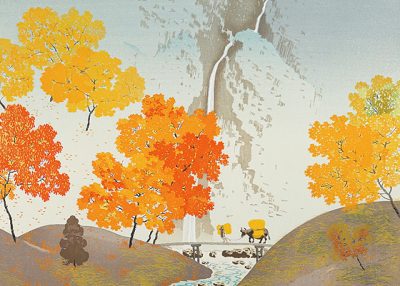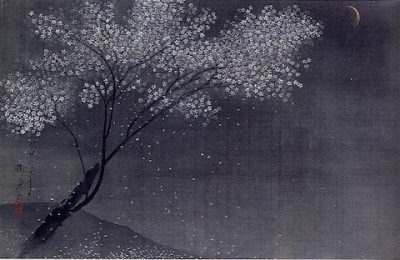Japanese Art (Tradition to Modernity)
Lee Jay Walker
Modern Tokyo Times

Hishida Shunsō (art above) was born amid the dazzling upheaval of the Meiji era (1868–1912) — a time when Japan stood poised between centuries of tradition and the blinding light of modernity. The world around him was being remade with feverish speed: samurai giving way to soldiers, wooden towns transforming into cities of brick and glass, and brush and ink learning to coexist uneasily with the imported hues of the West.
Yet for all the grandeur of the age, Shunsō’s own life was heartbreakingly brief. Born in 1874, in the tranquil heart of Nagano Prefecture, he died in 1911 — not yet 37 — fading just before the curtain fell on the very era that had given him form. His story, like his paintings, glimmers with a kind of luminous melancholy: beauty captured at the edge of impermanence.
When he moved to Tokyo in 1889, the contrast must have struck him with both wonder and shock — the silent cadence of rural life replaced by the restless hum of a city intoxicated by change. It was there, in that teeming crucible of innovation, where tradition wrestled with the new, that Shunsō found his calling. Surrounded by artists and dreamers determined to redefine beauty itself, he began to shape a vision that would carry Japanese painting into the modern age — even as his own time on earth quietly slipped away.

Gyoshū Hayami (1894–1935) blazed across Japan’s artistic firmament like a comet — brilliant, brief, and unforgettable. In the span of a mere four decades, he created works of such refinement and spiritual force that they continue to shimmer in the imagination long after his passing. His art defied boundaries, moving effortlessly through the layered worlds of Japanese tradition and European modernity. Within a single brushstroke, one could sense the quiet grace of Bunjinga, the opulent rhythm of Rinpa (Rimpa), and the delicate narrative pulse of Yamato-e — yet also the introspective shadow and symbolic resonance of the Northern Renaissance and European Symbolism.
In his youth, Gyoshū’s gaze turned eastward as much as westward. The serene grandeur of Chinese art from the Song and Yuan dynasties left a deep and permanent mark upon his spirit. These traditions — poetic, contemplative, and rich in literati sensibility — merged within him to form a vision at once ancient and startlingly new. Through Gyoshū’s hand, the dialogue between China, Japan, and the West became not a clash of aesthetics, but a symphony of luminous harmony.

Sawako Utsumi is a contemporary Japanese artist whose work moves gracefully between reverence and reinvention. While she often pays homage to both Japanese and European masters, her art ultimately seeks something far more elusive — a dialogue between color, emotion, and the unspoken layers of existence. In this homage to Kamisaka Sekka (1866–1942), Utsumi’s vision reaches beyond imitation to explore the spiritual heartbeat of form and hue.
The enigmatic yellow skyline is no accident. It radiates with deliberate ambiguity — a realm where illusion and reality dissolve into one another. The color seems to hover between dawn and dream, between the tangible world and the imagination’s shimmering edge. Like life itself, it asks a quiet, unsettling question: how do we discern what is real when illusion wears the same light?
Saint Peter 1:24 (a Christian holy man and martyr) said:
“For all flesh is like grass, and all its glory like the flower of grass. The grass withers, and the flower falls.”
https://fineartamerica.com/featured/transcendental-skyline-sawako-utsumi.html Transcendental Skyline

Modern Tokyo News is part of the Modern Tokyo Times group
http://moderntokyotimes.com Modern Tokyo Times – International News and Japan News
http://sawakoart.com – Sawako Utsumi and her website – Modern Tokyo Times artist
https://moderntokyonews.com Modern Tokyo News – Tokyo News and International News
PLEASE JOIN ON TWITTER
https://twitter.com/MTT_News Modern Tokyo Times
PLEASE JOIN ON FACEBOOK